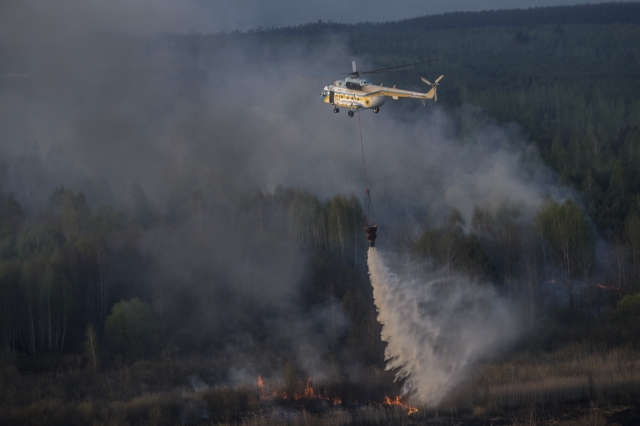Fire near Chernobyl May Increase Radiation Levels
Ukrainian rescuers are struggling to cope with fires that have been raging in the Chernobyl Forest in the Chernobyl exclusion zone since June 29. The fire, fed by dry grass and tree roots, came about due to a period of hot, dry weather. The area of the fire was at one point up to 130 hectares, though this has been reduced to 5.2 hectares in which the fire is still ongoing.
The State Inspectorate for Nuclear Regulation of Ukraine recorded on July 1that radiation was ‘excessive’ in some areas of the blaze. Head of the Ukrainian Ecological League, Tatiana Timochko, said that the dry vegetation and tree root systems were burning in a ground-level fire which affected the top layer of soil where the radionuclides are.
“The ash is carried by wind over long distances and creates the danger of radiation spreading over large areas. Then the ash residues get deposited on plants and soil and in water. Of course, these concentrations may be approximately equal to the maximum permissible parameters at large distances from the fire epicenter. But it is a serious threat for the surrounding area,” she highlighted on July 8.
The Minister of Emergency Situations of Russia, Vladimir Puchkov, said that there is no excess of radiation near the Ukrainian border. According to Puchkov, Russia is using every available radiation monitoring system and also monitoring the situation from space. “We provide all the necessary information about radiation to people around the clock,” he said.
The Ministry of Emergency Situations of Belarus also announced a normal radiation level near their border with Ukraine.
Weather forecasters predict that high temperatures will continue until Saturday followed by an overcast period with a slight drop in temperature. Intermittent rain is expected to contribute to extinguishing the fire.
Eka Karsaulidze












